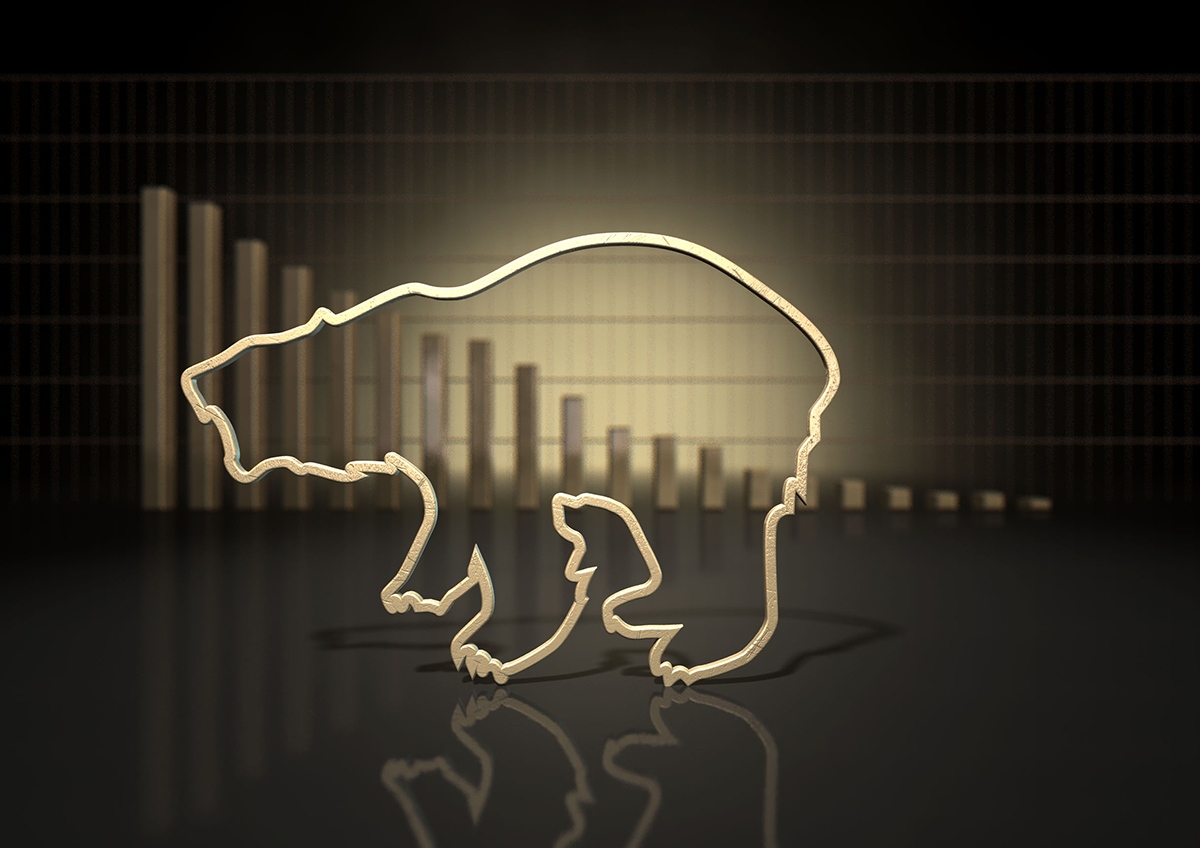It was a rough fourth quarter for the markets. It seemed like week after week, the major indexes – like the Dow, the S&P 500, and the TSX – got hammered by volatility. These days, just about every news website you can find is packed with breathless headlines about plummeting stocks, photos of nervous-looking traders, and editorials about a possible bear market in 2019.
Frankly, it’s true. Some major indexes are in a bear already, and it’s possible volatility will continue for the foreseeable future. But does that mean we should panic?
Nope.
Okay, take another deep breath. Market volatility is unpleasant, and here at HSI Financial Group, we certainly take it seriously. But panic? Never. Let’s break this down objectively by discussing:
Five Things to Know about Market Volatility
1. The definition of a bear market.
A bear market is defined as a 20%-or-greater decline from a recent peak. As of this writing, the Nasdaq, an index largely comprised of technology stocks, has officially hit bear market.1 The other three main indexes, the Dow, the TSX, and the S&P, are still flirting within bear market territory
Instead, the Dow, the TSX, and the S&P have hit what’s known as a market correction, which is a 10%-or-greater drop from a recent peak. Whether that correction will eventually turn into a bear is impossible to say, but regardless, here’s what investors need to remember:
2. Corrections – and even bear markets – are a normal part of investing.
On average, a market correction occurs about every 1-2 years. In fact, both the Dow and the S&P 500 endured brief corrections early in 2018 before soaring to new heights.
Bear markets are less common, but far from rare. Between 1900 and 2015, the markets encountered 32 bears – roughly one every 3.5 years.2
Pleasant? No. After all, who wants to see their portfolio drop?
Normal? Absolutely.
In a sense, a market correction is like the common cold. Annoying – but you tend to get one every year, and it hardly stops you from living your life. A bear market is more like influenza. It makes the average investor feel miserable, and you certainly should treat it seriously. But for most people, it’s nothing to panic about. You get some rest, follow your doctor’s orders, and wait to get better.
Right now, the markets have a cold. Do colds sometimes turn into the flu? Sure, and it’s possible the current correction will develop into a bear. But it’s not unusual and it’s nothing to freak out about.
3. Panic only makes things worse.
Imagine you got sick and then didn’t get better as quickly as you wanted. Would you start panicking? No. You would probably go see a doctor, but you wouldn’t resort to extreme measures like using leeches or asking for an operation.
Unfortunately, investors aren’t always so rational. The fact is, many investors do panic during corrections and bear markets, especially if they last for a long time. They sell all their investments without forethought, or move everything over into bonds, or any of a hundred other things. It’s reckless – and recklessness has destroyed more wealth than any bear market.
History shows that it takes around four months for the markets to recover from a correction, and twenty-two months from a bear.3 Some are shorter, some are longer, but regardless of the duration, our own emotions are the bigger problem.
When we get sick, we understand that it might take a while before we feel entirely normal. It’s a healthy acceptance of reality – and it’s a key part of getting better.
As investors, we need to bring the same acceptance to the markets.
4. The best way to combat panic is to increase our own knowledge.
When you’re sick, you go to the doctor and ask questions. Or you research your symptoms online, hoping to find answers there. Maybe you fire up an old episode of The Magic School Bus. Either way, you seek to understand exactly what’s going on in your body – and what your body’s doing to fight the infection. And if you’ve ever known anyone with a chronic illness, you’ve probably heard them say that simply understanding what was going on made them feel much, much better.
Let’s do that right now by looking at what’s causing this current market malaise. In this case, there are four main factors:
Interest rates. The US Federal Reserve raised the country’s key interest rate on Wednesday, December 19.4 This was expected. Part of the Fed’s mandate is to raise interest rates when the economy is strong – as it currently is in the US – because a strong economy mixed with low rates often leads to inflation. However, the markets don’t always appreciate higher interest rates, because it makes borrowing more expensive. This, in turn, reduces spending and can slow economic growth. Which leads me to the next factor.
The economy may be slowing down anyway. Make no mistake, although the economy is currently strong in US, it shows less strength in Canada, and there are signs that it might be weakening a little. Corporate earnings are slowing, many corporations are deeply in debt, oil prices have fallen dramatically, and the housing market is coughing, too. Some analysts even believe we are due for a recession in 2020 or 2021. This has many calling for the Fed to cut back on raising interest rates, and I predict the fed will raise interest rates only once, maybe twice, in 2019.
Another possible reason for a slowing economy is the third factor, which is:
The trade war. Trade tensions between the US and China continue, and while new tariffs between the two countries are on hold for now, there’s no immediate end in sight.
It’s not hard to understand why the markets worry about this so much. Tariffs – essentially a tax on imported goods and services – often hurt businesses. That’s because higher tariffs often lead to higher prices, which in turn lead to higher expenses. For example, if companies must pay more for the raw materials they need, that can significantly eat into their own profits. This, in turn, can lead to shipping delays, supply chain problems, higher prices for consumers, a resulting loss of business, you name it. All these issues, of course, are then reflected in the stock prices of the various companies affected.
Investor psychology. We already talked about the dangers of panicking. With any market correction, fear is always a factor. In this case, pundits have been proclaiming for months that the bull market may be ending, and that a bear isn’t so far away. This often becomes a self-fulfilling prophecy, because bearphobic investors will soon see bear tracks everywhere they look. This fear leads to panic, panic leads to sell-offs, and sell-offs lead to corrections.
So what can we do with this information? We can use it to understand there are reasons for the current market volatility, just as there are reasons we get sick. Neither, however, spells certain disaster or the end of the world.
5. Accepting market volatility as normal doesn’t mean we don’t have a plan for dealing with it.
The final thing you should know about bear markets is also the most important.
Let’s assume, for the sake of this discussion, that the current volatility will continue and even worsen.
(Note: That’s not at all guaranteed.) We accept that it’s normal. We learn as much as we can about it. But we also have a strategy for dealing with it.
We made a small adjustment in our clients portfolio just over a year ago, predicting at the time that the economy could continue at it’s current pace for another year to year and a half. Now here we are just a over a year later, and sure enough the economy has seen a sharp decline. Here at HSI Financial Group, we believe strongly in the investment strategies we’ve implemented. We look at your long-term goals, research which investments will do well over the long-term so you can reach those goals, and then hold onto those investments for the long-term.
Notice that I just used “long-term” three times in the same sentence. That’s because it’s so important. Just as one can get sick and still be a healthy person in the long-term, so too can the markets. In the big picture, your portfolio is meant to endure multiple corrections and bear markets. Because it’s long-term success that we’re aiming for, not short-term results.
It’s cold-and-flu season here in Canada…and apparently in the markets as well.
But it’s also the holiday season! That’s why you should focus on living and let us do the worrying. We’ll continue to monitor the markets and the economy. We’ll continue researching your investments to make sure they continue to make long-term sense for your goals.
We’ll continue focusing on keeping your finances healthy.
As always, contact us if you have questions or concerns by calling us at (403) 269-4640 or toll free at 1 (888) 816-7020, or leave a comment below and we’ll get back to you. Our team stands ready and our door is always open! In the meantime, have a wonderful holiday season and a Happy New Year!
Sources
1. “U.S. Stocks Extend Drop as Nasdaq Enters Bear Market,” The Wall Street Journal, December 20, 2018. https://www.wsj.com/articles/japan-leads-markets-lower-after-fed-raises-rates-11545284493?mod=hp_lead_pos2
2. “Bear Markets,” Investopedia, https://www.investopedia.com/terms/b/bearmarket.asp
3. “The stock market is officially in a correction,” CNBC, February
4. “Fed Raises Rates, but Signals Slightly Milder Path of Future Increases,” The Wall Street Journal, December 19, 2018. https://www.wsj.com/articles/fed-raises-rates-but-signals-slightly-milder-path-of-future-increases11545246216?mod=article_inline&mod=article_inline




